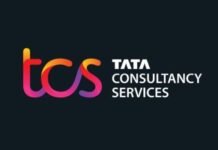Today, organizations are facing a huge challenge of staying relevant, innovating faster, defining the purpose of their existence and being sustainable in this disruptive world. They are shifting focus from running the business, to changing the business; which has significantly increased from 10% to 70% in the last 10 years.
“The Future of Work is already here and we see a paradigm shift in the workforce (who), work (what) and the workplace (where). We already have four generations; baby boomers, Gen X, Y and millennials working together in an organization”
We see liquid workforce on the rise, which comprises of talent from full time, managed services, freelancers, gig workers, and crowds. 35% of the US workforce is supplemental, temporary, project or contract-based. 95% of organizations are moving to a project-based economy where all initiatives are driven as a project with clear outcomes and deadlines.
With continuous automation, jobs are sub-divided into tasks and are either being outsourced or automated. This has the potential to disrupt 32% of today’s jobs according to the Organization for Economic Cooperation & Development (OCED). As what and who of the work shifts, so does the workplace. With all the available technologies at hand, employees have the flexibility to do work from anywhere. There is a heightened complexity in the workplace with recruiting, managing and retaining talent
Given the above scenario, increasingly organizations are faced with the question of how to increase personal accountability among employees at work. I believe this can be achieved by creating a humane workplace. Some of the initiatives that organizations can drive are provided below and this by no means is an exhaustive one.
Creating A Sense Of Accountability:
Personal accountability is driven when roles& responsibilities and tasks are clearly defined. Employees know what is expected from them, and held accountable for meeting or exceeding those expectations. Organizations are increasingly focused on how things are done here by paying attention to the intangibles, which is about building agility, collaboration, sense of ownership. We need to answer employee issues in real-time, address market challenges in a few hours, not in days, and work in a networked organization by being collaborative. Organizations are already using collaborative platforms like Slack, Yammer, and Facebook messenger to drive this behavior.
Organization As A Living Entity:
Organizations are seen as living entities and the thoughts, feelings, and behaviors of employees are the emotions of the organizations. We need to deeply listen which gives them insight on what it feels like to work here. When we listen to the voice of employees, it enables us to prioritize projects, people priorities & budgets. Today, organizations are deploying chatbots to listen to different employee segments to understand issues on engagement and predict attrition
Culture Of Care:
A humane workplace is driven by leaders who ask employees how they are feeling which tells that the organization cares about its employees. Leaders will have to make employees feel valued, energize them and serve their needs. This is enabled when we give them stretched goals, provide opportunities to innovate inside the organization, energize them by building a sharing culture, invest by rewarding and recognizing them
Employee Value Proposition:
We see employee value proposition evolving from a culture driven the brand to a purpose-driven brand. Some of the examples are Google has a tag line: Do cool things that matter, Loreal is talking about a thrilling experience, P&G’s core message is connecting people to purpose and for Unilever EVP is all about dream big, set goals, take action. When truly internalized in an organization, EVP will enable us to attract and retain the right talent and drive engagement.
Employee Well-Being & Happiness At Work:
Overall performance of individuals and organizations will improve when we take care of their overall well-being, which includes not only physical but also mental well-being. Employees should be able to bring his/her complete self to work and have the freedom to be themselves. Studies show happiness correlates to performance and what makes people happy are values like empathy, compassion, forgiveness, gratitude, generosity, humility and social connections.
Sense Of Belonging:
Organizations should provide employees the opportunity for two-way communication, build authentic connections by constantly understanding their needs and leaders should have compassion for their teams. This will encourage employees to fail fast, go beyond their roles and innovate. When employees know that they have their managers’ support, they are willing to take smart risks. This leads to a sense of belonging to the organization. AirBnB talks about the theme of ‘we belong here’ in their value proposition. A study conducted by Google found that the key ingredient for the best performing teams is the safety net created in the teams.
Managing Millennials:
According to several studies, millennials will constitute about 46% of our workforce by 2020. Surveys also indicate that 51% of them wants a specific direction, 65% wants to be mentored,87% wants career development & learning opportunities and 88% stay for more than 5 years with organizations with a clear sense of purpose. Today, organizations need to address these needs by creating social processes that will help to create a sense of community and belonging, opportunity to create impact by recognizing their contributions. Millennials want to work for organizations that are Social change agents who drive corporate responsibility, environmental sustainability, business ethics, and organizations that contribute to the overall good of the society
Employee Experience:
Organizations are constantly focusing on employee experience and moments that matter by creating Personas, Journey Maps, working in agile teams with end-users to quickly prototype solutions for the talent. Cisco drives employee experience through Moments that Matter and articulates what employees can expect from them and what they ask from employees.
METRICS IN PLACE
Employee engagement score, overall and key talent attrition, organizational performances like financials, brand value, market share, and productivity and innovation index are good measures to indicate personal accountability among employees at work. Gallup’s research also shows that companies with engaged workforces have higher earnings per share (EPS), and they seem to have recovered from the recession at a faster rate. In a recent study, Gallup examined 49 publicly traded companies with EPS data available from 2008-2012 and Q12 data (12 key questions) available from 2010 and/or 2011 in its database. This study found that businesses with a critical mass of engaged employees outperformed their competition: Companies with an average of 9.3 engaged employees for every actively disengaged employee in 2010-2011 experienced 147% higher EPS compared with their competition in 2011-2012. As per Gallup study; Work units in the top quartile in employee engagement outperformed bottom-quartile units by 10% on customer ratings, 22% in profitability, and 21% in productivity.
HR’s ROLE
HR plays an important role in driving personal empowerment in the organization. Valuing, energizing and serving employee needs are key components to drive personal accountability. Employees feel valued when they see their capabilities develop through different roles, constant learning, and developmental opportunities. The role alignment process ensures that the employee’s role is aligned to his/her capability and skill. The personal alignment process makes sure that individual values are aligned with the company’s values. These are key responsibilities that HR drives along with the business.HR needs to create the context in which members of the organization live the values, philosophy, and identity of the organization, which acts as an enabler for personal accountability. Finally, we need to drive processes that lead to internal integration (think, feel, act, do) and external adaptation (purpose, agility, collaboration) which drives personal accountability. There is no magic bullet to address this but various interventions as outlined will ultimately increase personal accountability among employees at work









